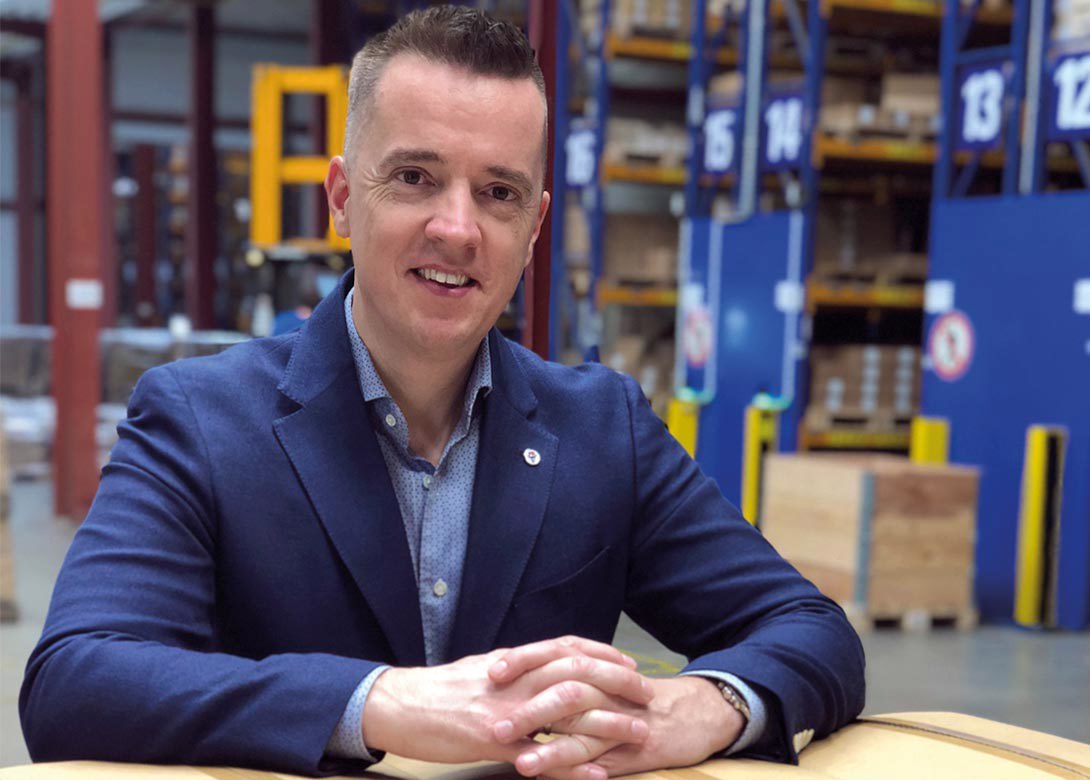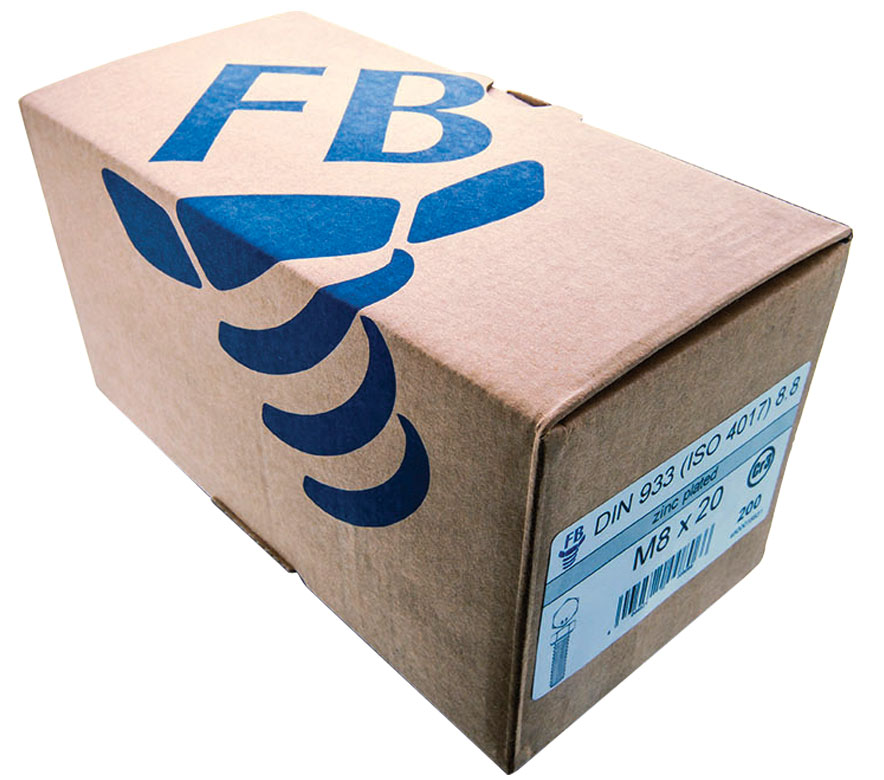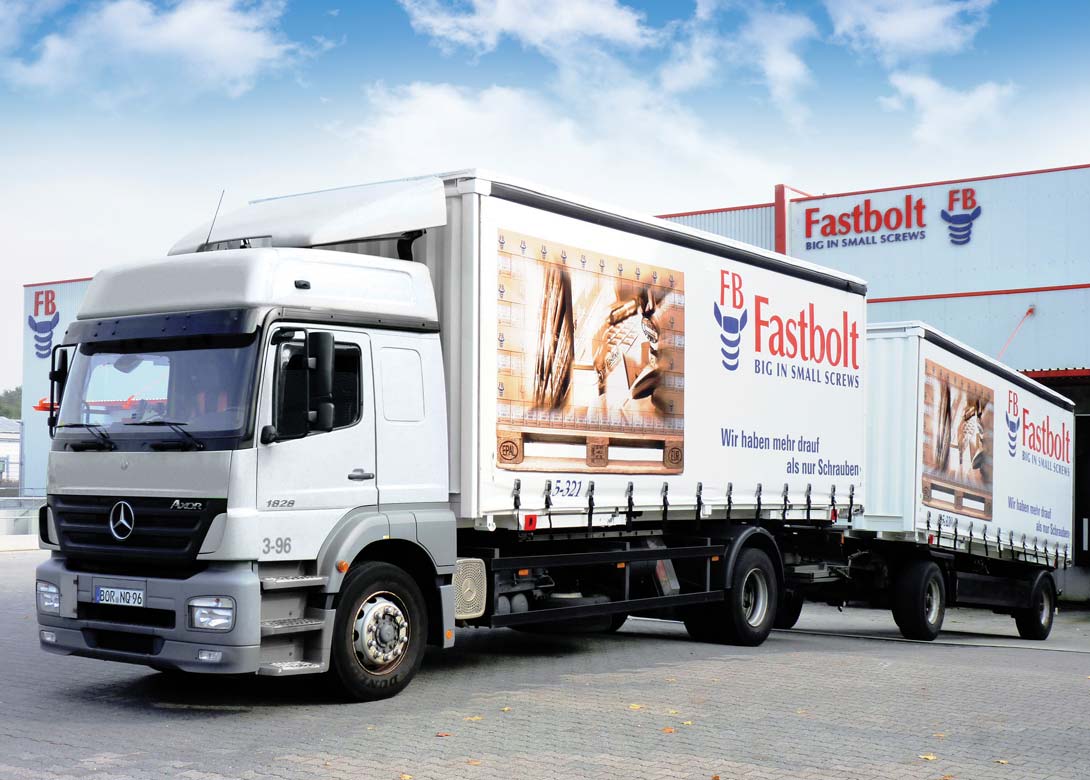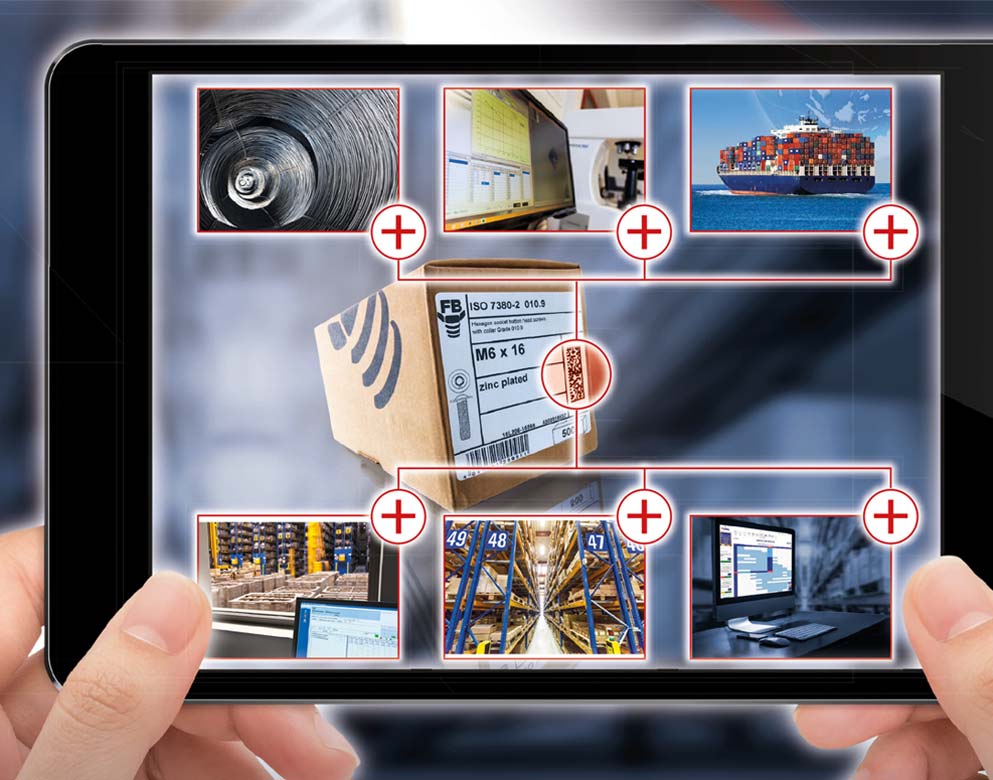
Since its establishment in 1982, Fastbolt has followed a simple business model – ‘fasteners for distributors’. Here Managing Director Ekkehard Beermann, explains what this means in practice and how the Group has developed to become a leading player within the distribution sector.
What is the Fastbolt distribution structure and how do you coordinate your inventories, logistics and sales strategy?
“Within Europe we have divided Fastbolt’s sales territory into three areas and in each of these areas we have a warehouse serving the market. The first company in the Fastbolt Group history was Fastbolt UK in Milton Keynes, which was established in 1982, and takes care of the UK and Irish market. Fastbolt Germany was created in 1992 and is responsible for the entire mainland European market. In 2013, we decided to set-up another warehouse in the south-west of Europe – in Portugal – called FB Iberica. This company serves the Portuguese and Spanish markets.
In addition, we have a presence in the Asian manufacturing market – on the supply side. We have one trading company in Shanghai, China, and we have our Fastener Quality Centre (FQC) that carries out inspections.
Regarding inventories, we have a centralised purchasing office – which is located in Germany – where purchasing decisions are taken for all the stock orders we place in the Far East. Our centralised purchasing team places the orders directly to our suppliers in Asia and shipments are despatched from the Asian manufacturers to our different warehouse locations in Europe. This way we have a consistent and coordinated product range in the different warehouses – with some differences based on popularity. For instance, there is greater demand for UNC/UNF dimensions in the UK than in mainland Europe – so those products are held only in the UK. If we need any then we will serve ourselves from the UK warehouse. Other than that, most of the products go directly from the Far East to the three different warehouses.”
You mention a presence in Asia and the FQC; why is it important for the Group to have this presence?
“In our business model we believe it is as important to be close to your suppliers as it is to be close to your customers. We are not in a pure selling business, we are in a trading business and part of trading is to buy. To do this it is very beneficial to have a permanent presence in Asia, because the Asian supply market is very big and constantly developing. That is why we have our trade company in Shanghai, so that our team can work directly with the market and fulfil certain jobs and services for us as a Group.
We set up the FQC, as a 50/50 joint venture with another distribution company, to give us the opportunity to carry out pre-shipment inspections before the product leaves for Europe. By carrying out this first level of incoming goods inspection we can check the quality of the goods at source.
From the very beginning we strove to achieve ISO 17025 certification for FQC, in order to carry out third party testing, which we were successful in doing. Today, we have a very solid base of customers who use FQC as their external quality lab in China.”

Is quality still a key selling point or is it now expected as standard?
“It is expected as standard, but it is also not easy to keep it on a consistent level. That is why we invest in the consistency of the quality and why we say no to certain opportunities in the supply market – as they may threaten the reliability of our product quality.
We can guarantee this consistency in quality through the careful selection of suppliers – followed by continual assessment, training and development of the suppliers. We ensure all suppliers fulfil the quality requirements of our customers. At the same time, a key element in ensuring consistency is to keep supplier relationships strong and long-lasting and not to jump around too much in the supply market.
When it comes to the shipments, our first check point is through the FQC in Asia. When the goods arrive in our warehouses we also carry out goods-in inspection. This combination of two different levels of incoming inspection enables us to highlight potential problems and weaknesses of products early and rectify them. We can do this because all quality related aspects of our business are coordinated through a dedicated software system solution.”
What makes Fastbolt different in the market? What services have become crucial?
“Apart from our business principle – only selling to distributors – quality has always been a fundamental element of our business. In addition to this reliable and assured quality, the processing and handling of the products have played and more of a key role in our business strategy.
Logistic solutions for fasteners are, in many cases, related to packing and handling the product and we can offer all sorts of customised packing solutions. We also offer different stock concepts, different types of drop shipments, direct container shipments – a really flexible set of options to meet individual needs. This is all based on providing a logistics solution that helps to increase efficiency.
However, as market requirements change, these services will also need to change. We see this in many areas, such as quality and in documentation, in processing and handling, as well as in information technology. The requirements of the market are constantly developing, and the services distributors need are different today than ten years ago – and in ten years it will be different again.
Our business and logistics solutions, along with the key products and services we can provide, help differentiate us from the rest of the market.”

How has 2018 progressed so far and how much of an impact has the fluctuations in raw material prices and currency exchange rates had on the market?
“It has been very challenging so far both on the selling as well as on the buying side. On the selling side we see the European market demanding a lot and growth is strong. On the buying side it is becoming more complicated to respond to those strong demands in Europe. Prices have been going up consistently through the last two years and so has the delivery time. We now have certain products that are only available to Europe in 8 – 10 months from placing the order in the Far East. This can make it difficult to respond to a very strong European demand.
Fluctuations in raw material prices have also had a massive impact. The constant price inflation since March 2016 has had a really significant impact on standard fasteners because the raw material cost is a high proportion of the total cost of the goods.
Another factor is the development of currencies and the high volatilities of the Euro versus the US dollar and local currencies in Asia. This was also what happened to the British pound after the BREXIT vote in the UK, which had a massive impact on the currency – and the currency had a 100% impact on the buying price of our product.
To combat these fluctuations is very difficult and complex. You cannot predict any price development, in the way you maybe were able to 15 – 20 years ago. Nowadays the world changes fast and sometimes it only takes a tweet of several characters from one person to change the whole business world. We try to limit the risk in our buying and we try to plan ahead, but we still buy when we need product. We cannot usually hold back orders in the hope the price level will go down. You can pre-buy currency, which provides a degree of insurance, but as we place orders regularly at some stage a changed level of currency exchange rate will hit you.”
Another factor within the market has been the cancellation of the anti-dumping tariffs on carbon steel fasteners from China. How do you believe this has influenced the market?
“The cancellation of anti-dumping tariffs had a big impact on the market, but I think people expected it to have a bigger impact than it actually did. When China came back in March 2016 – after the EU withdrew the anti-dumping duties at the end of February – many people expected that China would take over the big volumes of standard fasteners, which they lost during the anti-dumping. In fact, the China in 2016 was very different to the China of 2008. The cost structure of the Chinese manufacturers had changed completely. This meant that the cost advantage they used to have is no longer there to the degree it used to be.”
How has the role of distributors changed in the last 5 – 10 years and how has Fastbolt adapted to provide support to its customers?
“I think the role of distributors has developed a lot and the requirements set to distribution companies from fastener consuming industries have grown exponentially. For instance, the level of documentation, transparency and traceability has rapidly grown over the years.
At Fastbolt we see our role to fulfil these set requirements and we have to create systems and processes that will enable us to respond to them in the most efficient and effective manner. A big part of this will be technology, and we have already started to implement technology as a solution to answer those requirements.”

Digitisation is currently a hot topic within the industry. How has Fastbolt approached this area?
“We have been working on digitisation from an early stage, we came out with the first version of our e-commerce platform – FB online – back in 2005. At the time we found it helped customers to check availability and maybe also the price for the products we stock. From this we have developed a complete digital common ground with our customers where we exchange information processes. The customers not only get information, but they handle their business with Fastbolt through that platform.
As we have added more features and functionality to the software we have made it more attractive, which has resulted in a huge increase in the number of users. We also now offer loyalty programmes and volume-based discounts, which customers can only enjoy on the e-commerce platform.
The key challenge at the moment regarding digitisation is the resources we can commit to the area. We need more resources to program faster, to create more added value for our customers.”
With the increasing use of technology, what is the future role of the ‘human factor’ in business? Are there limits for digitisation?
“Of course there are limits, but we believe they will change constantly and what is not possible through digitisation today might be possible in five years from now. However, the ‘human factor’ will still play a major role in our business. What we try to achieve through digitisation is to release our employees to spend more quality time with customers, suppliers, and other business partners, and let the digitisation take care of processes that can be done even better and more efficiently through digitisation.”

What are Fastbolt’s plans for future growth?
“We have a specialised product range of less than 10,000 stock items and our biggest opportunity to grow in the future is to extend that product range up to 15,000 – 20,000 items. This could directly generate growth from the existing customer base in Europe.
Another growth opportunity is to respond more proactively and precisely to exact customer product needs. That is why as a Group we emphasise the importance of communication with our customers. We visit them regularly and we have international sales people who take care of our customers. We try to learn as fast as possible what the requirements are and in which direction they might develop in the future. We then try and incorporate these requirements into our business strategy.
A big challenge in generating sustainable growth is the unpredictable business environment. This means strategic planning is very important, we need to foresee a Plan B and Plan C, especially if the patterns in the market are changing.
As a European source for distributors, we will focus on increasing the efficiency and ease of buying at Fastbolt. We can achieve that through the application of technology and through upgrading our processes to be fully optimised.”

Will joined Fastener + Fixing Magazine in 2007 and over the last 15 years has experienced every facet of the fastener sector - interviewing key figures within the industry and visiting leading companies and exhibitions around the globe.
Will manages the content strategy across all platforms and is the guardian for the high editorial standards that the Magazine is renowned.
Don't have an account? Sign Up
Signing up to Fastener + Fixing Magazine enables you to manage your account details.